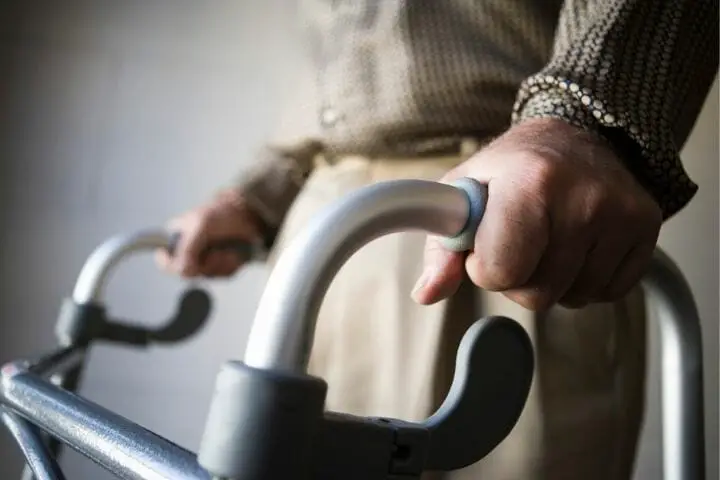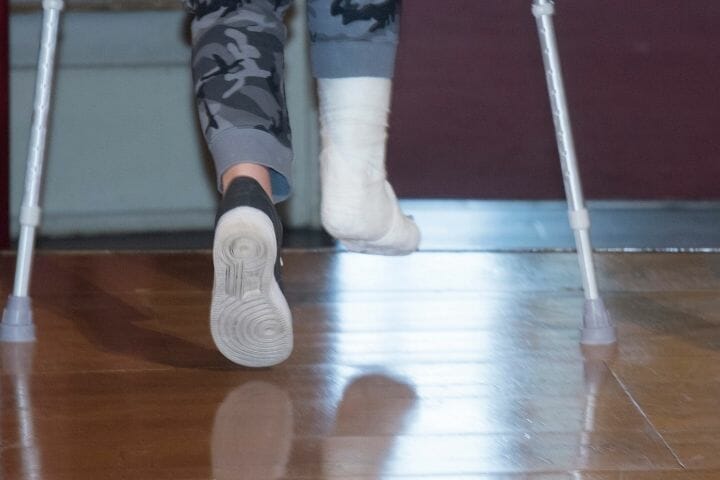An assistive device can provide you with independence, but it can be very expensive. What are your options to pay for assistive devices? Let’s find out.
Contents
Assistive devices can cost you a fortune. If you need an assistive device but are incapable of buying one then you can use many ways to get one. In this article, we will explore in-depth the various ways that we mentioned above.

How Expensive is Assistive Technology?
The NDIS guidelines on assistive technology pricing are instructive. Let us tabulate this model here to understand what falls under which category. Ultimately since in most cases its the insurer who pays out, it’s important to understand what they consider as low, mid and high cost assistive technology
| Particulars | Low Cost | Mid Cost | High Cost |
| Price | <$1500 | $1500-$5000 | >$5,000 |
| Complexity | Easy to use and set up | Difficult to own and setup | Very complex |
| Availability | Local suppliersDo not require disability specific outlets | Disability specific providers only | Disability specific providers only |
| Custom made | No | No | Yes, can be |
| Pricing quote needed? | No | No | Yes |
| Examples | Walking sticks Non slip footwear | Shower chairs Grab bars Special mattresses. Custom orthotics | Wheelchairs Complex electronic devices like alarms or two way communicators Adjustable beds |
What Are Your Options To Pay for the Assistive Devices?
The government and various non-profit organizations provide ways to obtain these devices through federal and local assistance programs. You can also get this through your private insurance or state, federal, and local government insurance programs.
Various national and local organizations help in covering the cost. Therefore, it’s important to be persistent and keep applying if you fail to procure it from one source.
Crowdfunding, non-profit organizations, health insurance, and private insurance programs are some other ways of getting these products. You can try to receive funding from these resources.
Where Should You Begin?
You can seek the help of the person who has recommended the assistive device, such as your doctor or healthcare provider. Many times, the doctor themselves can help you in getting the device you require.
This person can be a vocational Counselor, teacher, Healthcare provider, physician, or other professional. If they have recommended a device, you can ask them where you can get it. You can also ask for documentation, such as a written recommendation or prescription. That prescription should mention why you need the device. The documentation is to support the request and claim when you approach suppliers.
If you do not have somebody who has recommended the device, then you can find a supplier or a provider as they can also help you directly. Providers include people like Health Care professionals, rehabilitation facilities, home health Agencies, School systems, physicians, and others.
In the category of suppliers, some people and organizations offer assistive technology, educational products, medical equipment such as manufacturers, stores, and vendors as they produce the device.

Where Do You Use Your Assistive Device?
Where you use the product helps determine the options to pay.
If you use the device at home:
If you are using the device at home or a rehabilitation center due to a medical disorder, then the option to pay for it is covered by your health insurance. As these devices are prescribed by the health care practitioner or a specialist, health insurance is the easiest way to cover the cost of the device.
You can get a written prescription under a care plan from the health practitioner as it is your medical necessity.
Private insurance plans provide devices and services to help people who have gone through disabilities and chronic conditions or injuries. It is also offered to persons who want to improve their mental and physical health.
The health insurance plans include Medicaid, Medicare, veterans health benefits, and Private Health Insurance.
When talking about insurance options, there are rules and limits which you will have to understand about the cost of the covered devices. You will also need to understand who is eligible to prescribe the devices, the appeals process, and the process for paying for the devices. Let’s discuss each of these insurance options below
Insurance options:
Private health, disability insurance, Medicaid, Medicare, and workers’ compensation can help you pay for the assistive devices. Many times a prescription from the doctor or other specialist is also required. In various cases, a demonstration of the medical necessity of the equipment or product is essential.
Medicare
The U.S federal government administers Medicare. It is a national social insurance program. Medicare is available for older adults over the age of 65 and young people who have any kind of disability. The scope of this coverage is limited. You can learn about it by visiting the medicare office or website.
Medicaid:
Medicaid is a program for families and individuals with low income and resources. The U.S cooperative federal health runs the Medicaid program. People who are U.S citizens, legal parliament residents, and people with disabilities are eligible to avail of the benefits of this program.

Description of state Medicaid programs
A person who wants to get Medicaid funding for assistive technology must fit the three-part test:
- The individual must fit into the eligibility criteria of Medicaid.
- The device you request must be included in the list of devices funded by the Medicaid program.
- The individuals must prove that the device they are requesting is a medical necessity for them.
Medicaid waivers
Medicaid waiver is used in the Medicaid plan. It allows a medical plan for various specialized medical equipment and supplies. It is also used for additional services. Every state has a different plan which defines which type of services will be provided under the Medicaid waiver program.
- Understanding the Medicaid waiver: “Understanding the Medicaid waiver a guide” for the individuals and families who have disabilities is published by the governor’s council on developmental disabilities Georgia. You can go through it to get in-depth knowledge about it.
- Early and periodic screening, diagnosis, and treatment: It is the child health component of the Medicaid program. This program is designed to improve children’s health who come from low-income backgrounds. This program finances all the necessary pediatric services to the children.
Private insurances
Many private insurance policies pay for those assistive devices which are medically deemed necessary. The physician prescribes these insurances. Coverage is known to vary as per the policy terms and carrier.

If you use the device as part of a student individualized Educational program (IEP):
These devices are required for the students with writing, reading, learning, speaking, and listening needs as they cannot fulfill all these learning effectively in the classroom. Thus they need this device.
The user can use the device in any educational program for individuals with disabilities. In that case, the cost of the assistive devices can be covered by a local school district.
For the better coverage of these devices is that they should be adequately described in the students’ IEP. If the devices are covered, the school district leases, purchases, or provides the product at no cost.
Federal and state programs:
Federal and state programs are the other options through which you can pay for assistive devices. There are a lot of options that are available through Federal and state government programs. You can take the assistance of the following programs and select one suitable option to pay.
Office of Special Education and Rehabilitative Services (OSERS):
This program supports and helps children and youth with disabilities and educates the children. This program also provides rehabilitation for adults who have disabilities. It is known to support the research to enhance the lives of individuals who suffer from disabilities.
- Department of Education Discretionary Grant Application packages.
- Department of education and funding opportunities and resources.
- OSERS grants and funding.
National Institute on Disability and Rehabilitation Research
This program provides support for comprehensive research studies related to the rehabilitation of individuals suffering from disabilities. It also provides leadership support.
NIDRR Grants and funding
It provides a list of grants, projects, and research. It also offers various funding options and is a great way to pay as it helps individuals and families with disabilities.
Office of Special Education Programs (OSEP)
This program is known to improve the health of toddlers, children, and infants. It is also for the youth who have disabilities. It provides financial and leadership support in the local districts. It includes IDEA formula grants, IDEA discretionary grants, special education research programs, and IDEA funding.
Rehabilitation Services Administration
This program helps individuals who have mental and physical disabilities. This program is designed for disabled people to live independently and obtain employment such as psychological services, medical support counseling, job training, and other individualized services.
It gives priority to the people who are significantly disabled. RSA is an excellent way to pay for assistive devices as it is known to provide funds to state vocational rehabilitation agencies which help individuals with disabilities.

RSA Grants and Funding Opportunities
It includes scholarships and discretionary grants.
Race to the Top Fund
It provides grants and rewards to the states for education, Innovation, and reforms for students in the disabled category.
There are four things to achieve into this-
- Recreating, rewarding, developing, and retaining good teachers and principals at the places where they are needed the most.
- Turning to the lowest-achieving schools.
- Building data systems that measure the success rate and growth of the students that inform teachers and principals about how they can improve the way of teaching and construction levels.
- Adopting various assessments and standards that prepare students to be better and succeed in college and the workplace. It helps them to compete in the global economy levels.
Client Assistance Program
This program aims to inform the clients and provide them with all the available services and benefits as they are disabled.
If you use the device at work or for other employment-related activities:
If you use the device at work or other training supports, in that case, the cost of the assistive devices can be covered by the employer, state vocational rehabilitation agency, or various other federal government employment programs.
People can use it while participating in vocational training while conducting research. The cost of this device can be paid for you by an employer as it is a reasonable accommodation or by various other government programs. If you qualify for the programs, then it may assist you in paying for the device. It can pay the full amount or partial amount of the device.

Which Organizations Provide Funding ?
Through Government-sponsored resources:
Local Agencies and states help people who suffer from disabilities. You can obtain information about the funding options sponsored by the government. These funding options help to obtain assistive devices.
Various government-sponsored resources help in funding these products. Ensure that you think outside the box while considering which resources to contact to get the assistive devices. Some devices are used to serve different age groups.
For instance, people with visual impairment can use a communication device that translates text to speech. It can be beneficial for people with reading and speaking impairments. You need to find out which device will assist a particular age group. You can find different disability and aging resource centers. You can even find eldercare located in your state.
Local community, Civic, and charitable organizations:
The other resources which you can use for funding are places of worship charities, volunteer groups, civic organizations, and private foundations.
For example, some clubs provide eyeglasses for low vision and other assistive devices for people who suffer from blindness and visual disability. These kinds of organizations are listed on the local city and town websites.
Non-profit, specialty, and consumer organizations:
Various non-charitable, non-profit, and consumer organizations are excellent in providing assistance to cover the cost of assistive devices. This type of organization can either pay the partial amount or the complete amount of the assistive devices.
Clinical trials and product development:
An excellent way to get assistance with assistive devices may be participating in a clinical trial. In this kind of trial, researchers test new products and different treatments.
The research center covers the cost of the assistive device and Healthcare products; it also pays for the visit; sometimes, they provide a small stipend for participating in the study.
Motor vehicle adaptive services:
Various auto manufacturers offer adaptive equipment such as wheelchair ramps, lifts installed on the vehicles, and hand controls. You can also qualify it depending upon the programs.
You can contact the adaptive equipment installers to get information about the programs, manufacturers, documentation, and application forms.
Crowdfunding:
The internet including social media has created a good way of raising money and overcoming financial problems. They also pay for services and various assistive devices.
Another type of crowdfunding is where people can collaborate with these platforms for different purposes and funding programs.
What Can You Do When You Are Denied a Claim and Need Help?
If you need information about the legal advocacy in obtaining or paying for any kind of assistive device. In that case, you can immediately contact your state’s protection and advocacy system.
These agencies can provide you with information about advocacy services under Federal and state laws to people who have any kind of disabilities. It can help you with this.
They have the authority to provide legal representations. These representations may include access to financial entitlements, healthcare access, housing employee opportunities, and educational programs.
For example, if the school system program and any other insurance have denied the payment for the assistive devices, the PA system can provide you with the information about it.

Wrap Up
People who suffer from any kind of impairment require assistive devices. You can get it through various Health Insurance like Medicare, Medicaid, and private insurance.
But to get these assistive devices, you need to fit into the eligibility criteria to have a proper reason and the doctor’s prescription. Many people get confused about getting a grant to receive these devices.
If you were looking for such advice, I hope this article has helped you to understand how you can pay for assistive devices that you need. If you have unanswered queries, you are free to post them to us in the comments section and we will get back to you with answers shortly.
Kindly post this article on your social media handles and within your groups for further reach. It may help a person looking for this information to get the right direction in which to approach their search for the perfect assistive device for their condition.
Thank you!
